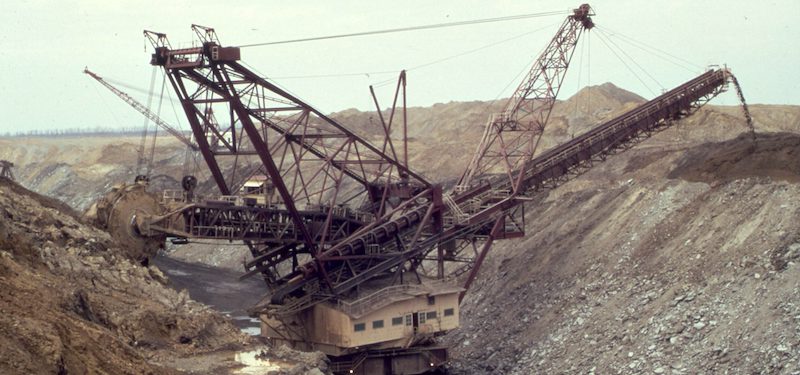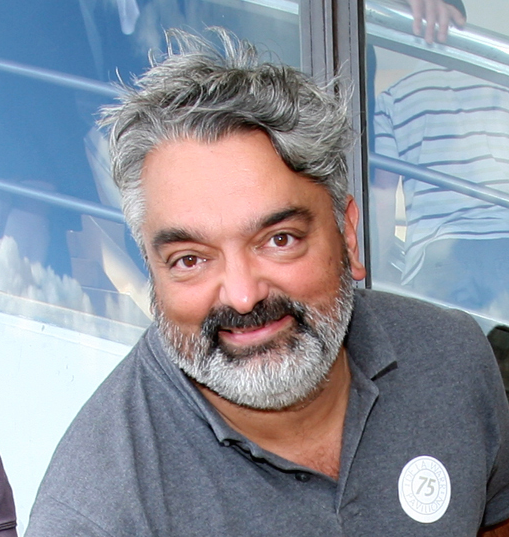Audience data strip miners fail to deliver

It’s a sad truth: Advertising technology designed to find people for advertisers to sell stuff to, is easier and cheaper to produce than content that attracts people who want to buy stuff from advertisers.
Cheap ad tech thrives on cheap scale – trawling millions and millions of pages that cost almost nothing to produce and can be strip-mined of data and re-targeted with ever more high-volume, low-value adverts. It’s why US ISPs persuaded Congress and US President Donald Trump to let them to sell their customers’ browsing data without their permission.
By pumping out cheap content in massive quantities, the US ISPs can finally collect user data in bulk, and develop new ad tech to trawl it for what’s trending, not what’s good, in the way that market behemoths like Google and Facebook already do.
The worst offender, AOL CEO Tim Armstrong, headed Google ad sales before taking over AOL in 2009 to bulk buy audience targeting ad tech start-ups. “None of this was a secret when Verizon bought AOL — the Ad Age headline was straight-up ‘Ad-Tech, not Content, Is King in the Verizon-AOL Deal’,” wrote The Verge’s Nilay Patel and Ben Popper this month. “Can’t be any clearer than that.”
Patel & Popper argued that Trump’s action will free Verizon and other ISPs to take data generated by the tracking super-cookies they stick on its customers as they use their broadband network, and mash it up with AOL’s ad stack. This “hyper-targeted marketing information” will be effectively unstoppable, because Verizon will own both the pipes and much of the content flowing through it.
Cheap scale digital advertising like this is a blight on the internet. A new industry study estimates that $12.48 billion of ad spending in 2016 was fraudulently picked up by bots rather than real customers or was not properly loaded on a page where a human could view them. This made almost 20% of the $66 billion spent worldwide on digital ads last year fraudulent or misreported, and valueless.
Even so, the Interactive Advertising Bureau (IAB) has reported that the third quarter of 2016 saw a total of $17.6 billion spent on digital ads, a 20% increase from the same period a year earlier. This was a reflection of growth in mobile and video and “marketers’ continuing trust in the internet’s power to connect with today’s audiences”.
There is less trust in ad-tech’s ability to facilitate that connection. Some 29% of automated ‘programmatic’ ads miss a target, as opposed to 12% of ads sold directly by humans, yet eMarketer predicts that by 2018, over 80% of digital display ads will be programmatic, up 37% from 2014. The problem is exacerbated by a lack of accurate metrics and viable regulation.
Advertisers need data on user preferences and behaviour. Even if the ad tech misreads the data, Google and Facebook has more of it to interpret. Facebook tracks what its 1.5 billion users see and click on in ways that other corporations like Verizon can’t yet match, even if by buying up ad-tech start-ups and accumulating its own mega-stores of customer data, Verizon hopes that it can.
The best advertisers can hope for is better analysis, Dan Jaffe, of the Association of National Advertisers, told Axios: “Because digital and mobile are growing faster than any other industry, the regulatory and foundational steps that you see in more mature media — like good metrics reporting — didn’t necessarily happen immediately. Now we’re making major efforts to catch up.”
What happens if they fail? “I expect even more ad blocking and less trust of digital advertising, which ends up harming everyone that matters, including marketers, publishers, and importantly consumers,” Jason Kint, of Digital Content Next, a trade group seeking better online advertising, told The Verge. “They (Verizon/AOL) know what they’re doing. I just think it’s bad for the marketplace overall.”
Digital Content Next found that Google and Facebook are currently impossibly unbeatable in the digital advertising market, scooping up 99% of $2.9 billion in new advertising growth in the third quarter of last year, with Google making up about 54% of the total and Facebook about 45%, leaving just 1% for everyone else.
If there’s to be a future for digital-first advertising, it lies in developing ad tech that delivers better quality ads – that is ads that are more directly reflective of the interests, locations and needs of their target audiences – and a regulatory and foundational environment that advertisers & audiences can trust.
For this, we may be in for a long wait. In the meantime, how do we respond? Cheap scale programmatic ads will be cheap and profitable enough to sustain short-term growth for businesses with no connection with their audiences, but it is precisely because of this that programmatic has proven unsuitable for small or locally-owned enterprises.
Local businesses cannot afford a 20 percent failure rate on their ads, so in the short term they are keeping local print media advertising viable for a while. “Hyperlocal” news organisations can still thrive in areas where high-speed Internet access is often limited, but the wider rollout of 4G mobile services will eventually drive these audiences to fetch their news from smartphones.
The Adirondack Daily Enterprise in up-state New York was founded in 1894 and counts a print circulation in the few thousands. It continues to draw advertisers, says publisher Catherine Moore, thanks to reporters with a “deep commitment, sense of purpose and engagement in the community in which they live”. Could that attitude reap audiences and advertising income on Facebook as well?
Google & Facebook will inevitably find better ways to trawl their huge customer data sets for actionable intelligence they can sell to local advertisers targeting local audiences. The reality is that cheap scale advertising is too blunt a tool for “hyper-local” news outlets, but like ISPs like Verizon, the hyper-locals lack the data sets and the ad-tech to target local audiences precisely enough to make digital advertising worthwhile.
That privilege currently remains exclusively with Facebook and Google. Tapping into that data and making innovative use of it is the challenge.
Fiction & non-fiction writers that self-publish on digital platforms like Amazon are already significant players in the e-Book market. Local bars, dog groomers, sports clubs and bakers thrive on the localised networks Facebook’s digital platform creates: Why shouldn’t self-publishing independent journalists or small media organisations use platforms to similar advantage?
Plug.Direct is a content optimisation app for journalists, specialist writers and ‘small media’ moving into professional platform publishing on search & social. It offers freelance journalists, expert writers, activists and community media entry-level access to the Social Network’s computing power, underwritten by a quality score – a test of provenance and professionalism to help distinguish (not define) good reporting. Its development is supported by the Google Digital News Initiative’s Innovation Fund.

